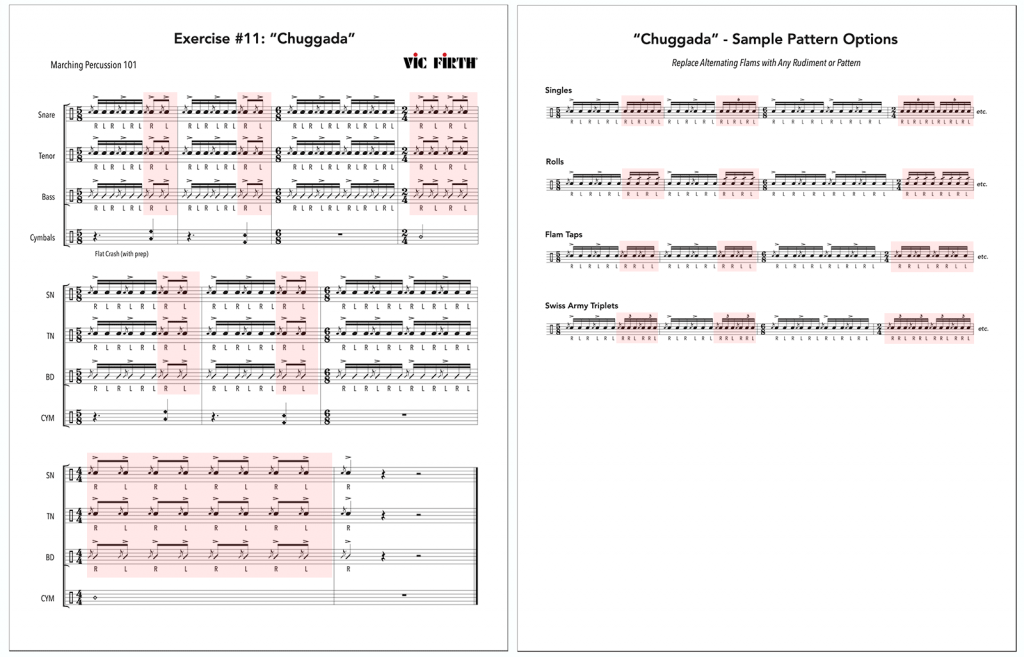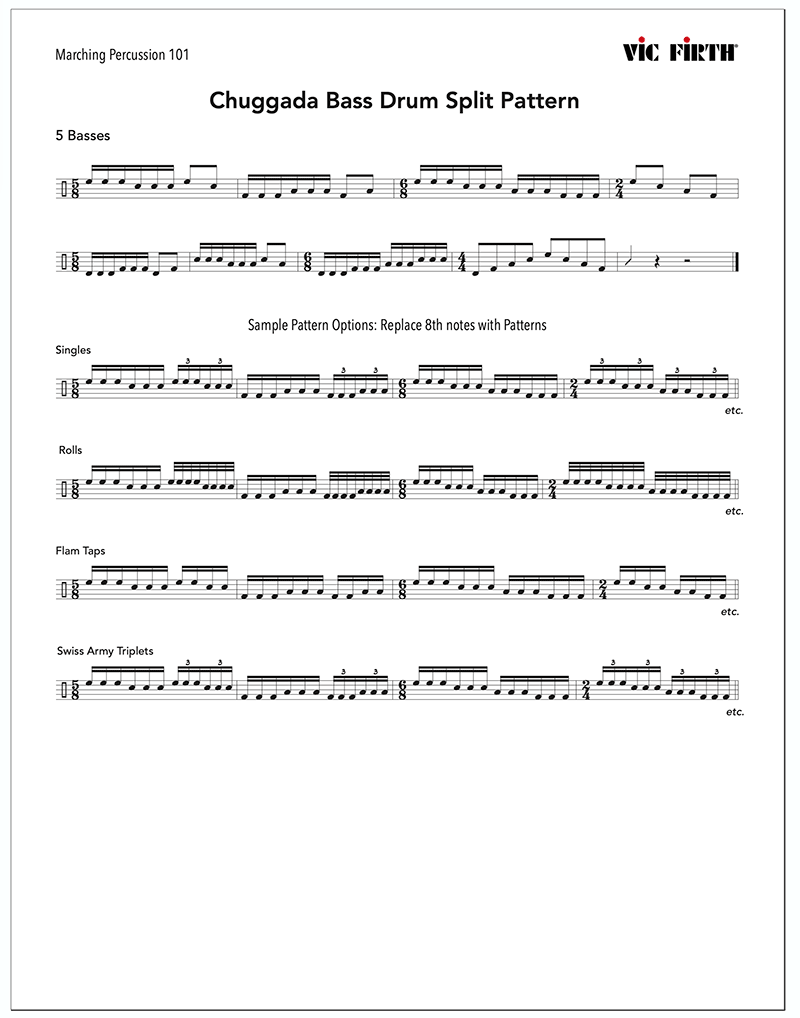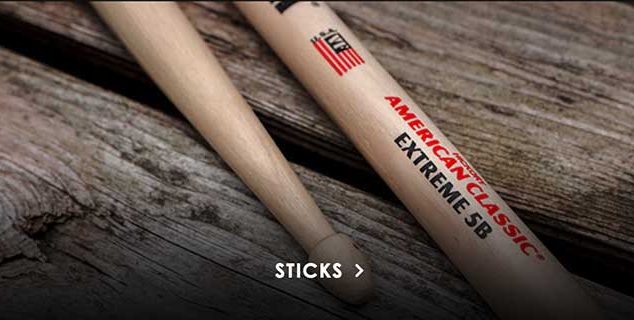EXERCISE #11: “CHUGGADA”

This exercise enables you to plug any rudiment into 1, 2 & 4 count “shell,” making it infinitely expandable. Depending on which rudiments you choose to work on, adding it to the shell will work on timing and expand your ability to rapidly change fulcrum pressure between the rudiments in one exercise.
• First learn the pattern of the exercise with alternating Flams in the 1, 2 & 4 count shell. All of the same techniques that you’ve learned in the previous exercises apply: two height control with consistent rhythmic accuraccy on all inner beats and consistent spacing of all the grace notes of the flams (“chuts”, not “pops” or “fa-LAMs”).
• The first rudiment applied in the shell of this exercise is the “Single Stroke Seven” – or 16th note triplet pattern. Work to maintain a strict tempo between the duple Flam Accent pattern and the 16th note triplet (think of the 8th note base in the triplets). The Flam Accents require a strong fulcrum pressure, then moving to the singles, a relaxed rebound stroke. In the examples, you’ll see a full rebound stroke on the singles at a slow tempo, with gradually lowering heights as the tempo increases. Keep a relaxed rebound stroke throughout, using the fingers to dribble the stick for the 2 & 4 count shell patterns.
• The second rudiment applied in the shell is a 16th base roll (1, 2 and 4 counts). You will need to adjust the fulcrum pressure to keep the roll in tempo and create a consistent motion of the forearms in the 8th note pattern. Play the rolls at a lower height per the tempo required.
• The third rudiment applied in this example is Flam Taps, which is a rebound rudiment. Relax the fulcrum pressure and allow the natural rebound of the drum for each of the hand-to-hand patterns of the Flam Taps. Listen carefully to the spacing of the grace notes in each of the flams throughout.
• Finally, we apply a “Swiss Army Triplet” to the shell pattern, which requires a much lower height and stronger fulcrum control. Again, the spacing of the flams in each swiss triplet is important, otherwise you will loose clarity of the the 16th note triplet rhythm.
• Any rudiment that you substitute in the shell will require a different set of control issues, which is why this exercise is so effective. With each one, work it slowly with a metronome and listen for rhythm accuracy and consistency, then detail the fulcrum pressure changes between the patterns that are necessary. In the end, the ability to adapt the fulcrum pressure and wrist/forearm motion between the patterns is what will take your drumming to the next level! Good luck!
CLICK HERE TO DOWNLOAD THE MARCHING PERCUSSION 101 EXERCISE PACKET
Including Full Battery Percussion Score and Part Booklet
PLAY-ALONG VIDEO 1
Battery Only (No Tracks)
PLAY-ALONG AUDIO: BATTERY ONLY
PLAY-ALONG VIDEO 2
WITH PLAY-ALONG TRACKS
PLAY-ALONG AUDIO: WITH TRACKS
Alternate Exercise for Bass Drums

• Play 16th notes with no accent (as written here) or will an accent on the first note of each pattern of three. Alternatively, you can add a flam at the beginning of each 3 pattern to play flam accents in unison with snare and tenor part.
• Depending on the rudiment or pattern that is called for in the snare/tenor part, bass drums will play 8ths, 16ths, 16th note triplets or 32nd notes.

PERFORMANCE WITHOUT LIMITATION…BY DESIGN
For nearly 60 years, we at the Vic Firth Company have focused on developing and manufacturing what has become the world’s most popular drumsticks, mallets, alternative implements, and accessories… with the best durability, feel, and sound options, across the widest variety of genres and styles.




